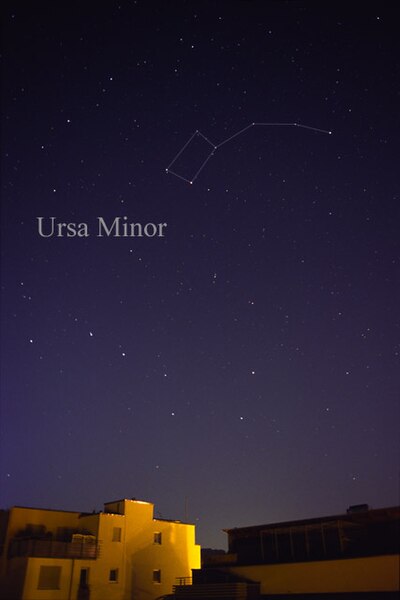Ursa Minor, also known as the Little Bear, is a constellation located in the far northern sky. As with the Great Bear, the tail of the Little Bear may also be seen as the handle of a ladle, hence the North American name, Little Dipper: seven stars with four in its bowl like its partner the Big Dipper. Ursa Minor was one of the 48 constellations listed by the 2nd-century astronomer Ptolemy, and remains one of the 88 modern constellations. Ursa Minor has traditionally been important for navigation, particularly by mariners, because of Polaris being the north pole star.
Ursa Minor as depicted in the The Book of Fixed Stars, ca. 1009-1010
The constellation Ursa Minor as it can be seen by the naked eye (with connections and label added). Notice the seven stars of Ursa Major that form the Big Dipper and then make a line from the outermost Big Dipper stars (sometimes called the "pointers") to Polaris.
Ursa Minor and Ursa Major in relation to Polaris
NGC 6217
Ursa Major is a constellation in the northern sky, whose associated mythology likely dates back into prehistory. Its Latin name means "greater bear", referring to and contrasting it with nearby Ursa Minor, the lesser bear. In antiquity, it was one of the original 48 constellations listed by Ptolemy in the 2nd century AD, drawing on earlier works by Greek, Egyptian, Babylonian, and Assyrian astronomers. Today it is the third largest of the 88 modern constellations.
Ursa Major
The constellation Ursa Major as it can be seen by the unaided eye
Ursa Major and Ursa Minor in relation to Polaris
The Pinwheel Galaxy







